Spider plants’ leaves can bend due to many different reasons. The main ones are excessive or insufficient water and too much direct light.
These beautiful houseplants should be kept in bright indirect light and watered when the top two inches of its soil are dry. Other causes include pest infestation, a pot size that’s too small, and not enough fertilizer.
- Related Article: Spider Plant Indoor or Outdoor
Read on to find out more about the bending of spider plant leaves and their solutions.
1. Underwatering: Soak Your Spider Plant
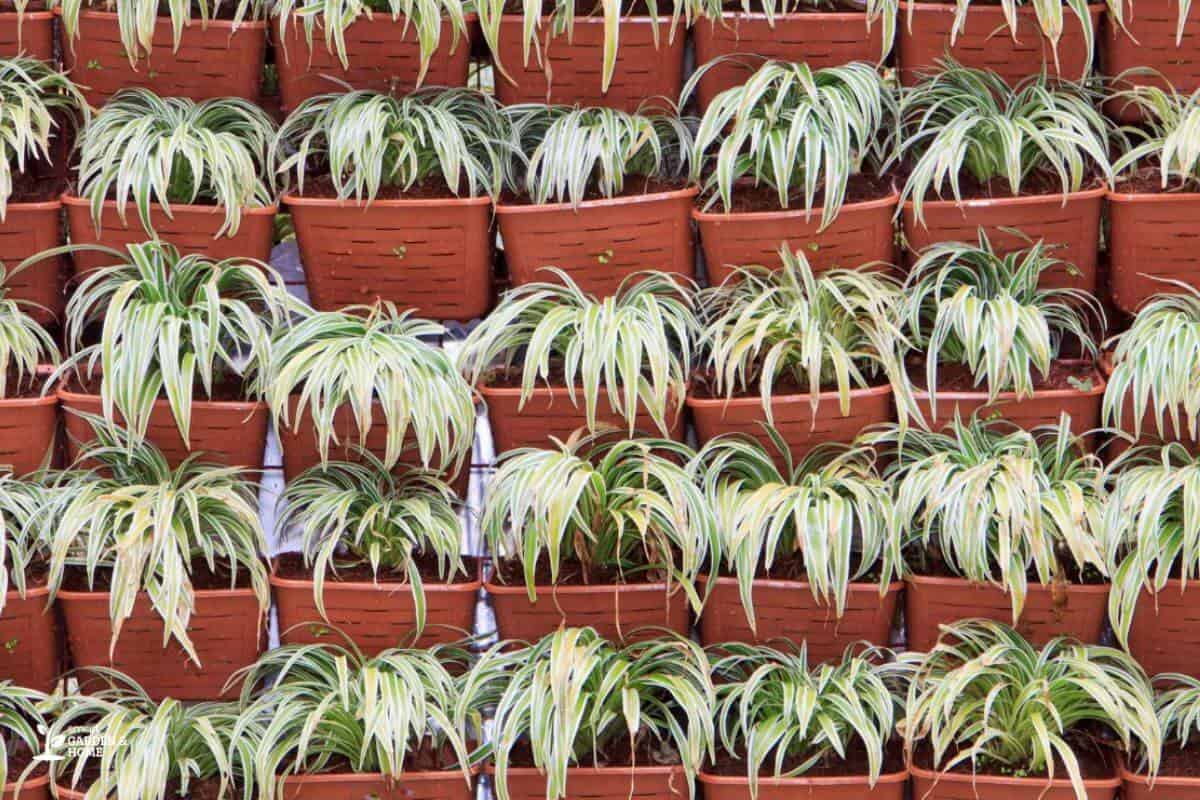
The main cause of bending leaves in spider plants (chlorophytum comosum) is a lack of water. To know if the cause of a curly spider plant is underwatering, check the soil’s moisture levels and the current temperature.
Summertime, as well as hot afternoons, have an adverse effect on the leaves of spider plants. It will scorch it and dry up the plant’s soil fast as well.
When you are definite that the problem is underwatering, simply take your plant and soak it with water for a few minutes. After which, you can let it drain and adjust your watering schedule.
Water your spider plant only when the top two inches of the soil are dry.
To check the humidity level, you can simply use your finger or a chopstick, but a moisture meter is a more precise instrument. When this reads 3, it means it’s time to water your spider plant.
2. Overwatering: Water Less and Repot Your Spider Plant
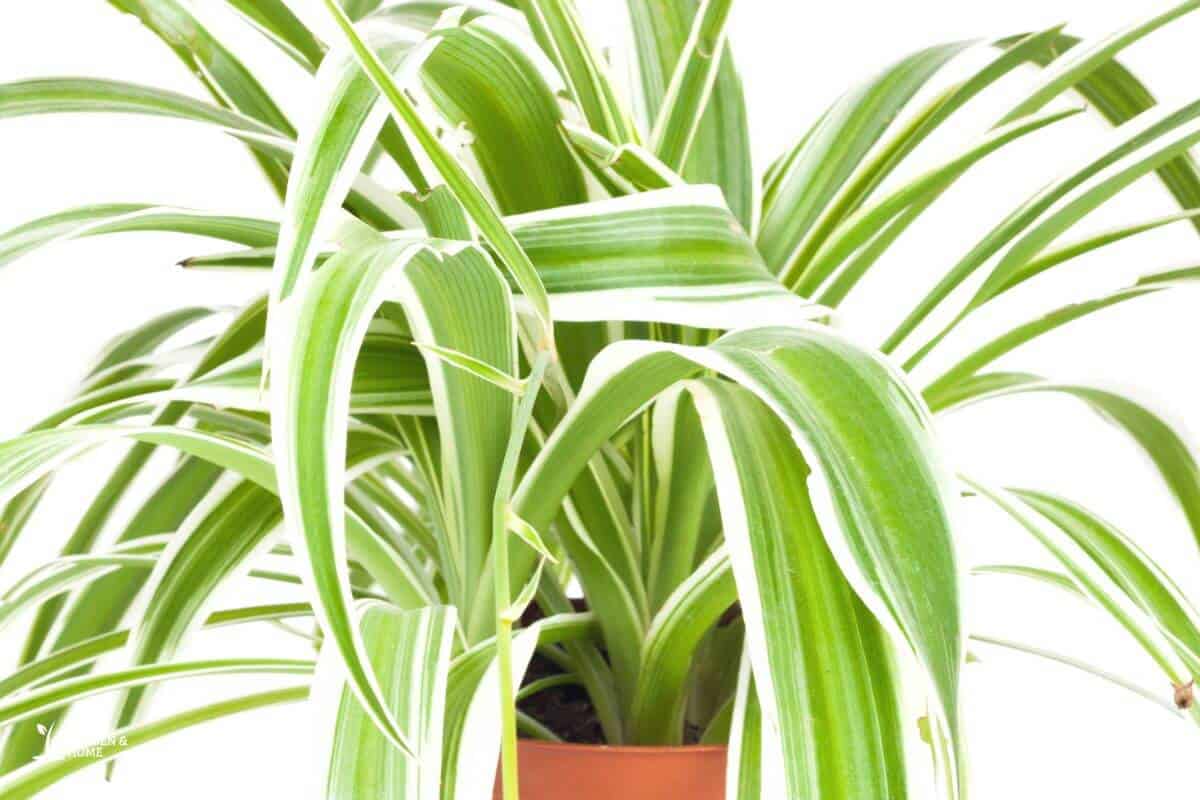
Too much water can also lead to a curly spider plant and worse, root rot.
When your soil takes too long to dry up and stays soggy for weeks, you might be giving it too much to drink or this may also be caused by the use of the wrong pot or soil
The best course of action to take is to correct your improper watering schedule. It might also be a good idea to repot your spider plant using a more appropriate pot or soil.
Using the wrong soil can lead to root rot and deprive the plant of the ability to absorb nutrients.
The same is true when using the wrong pot material, size, and structure. Make sure that your pot has drainage holes and is in a size that is appropriate for the plant to address any watering issues.
3. Direct Sunlight: Place Your Spider Plant in Bright Indirect Sunlight
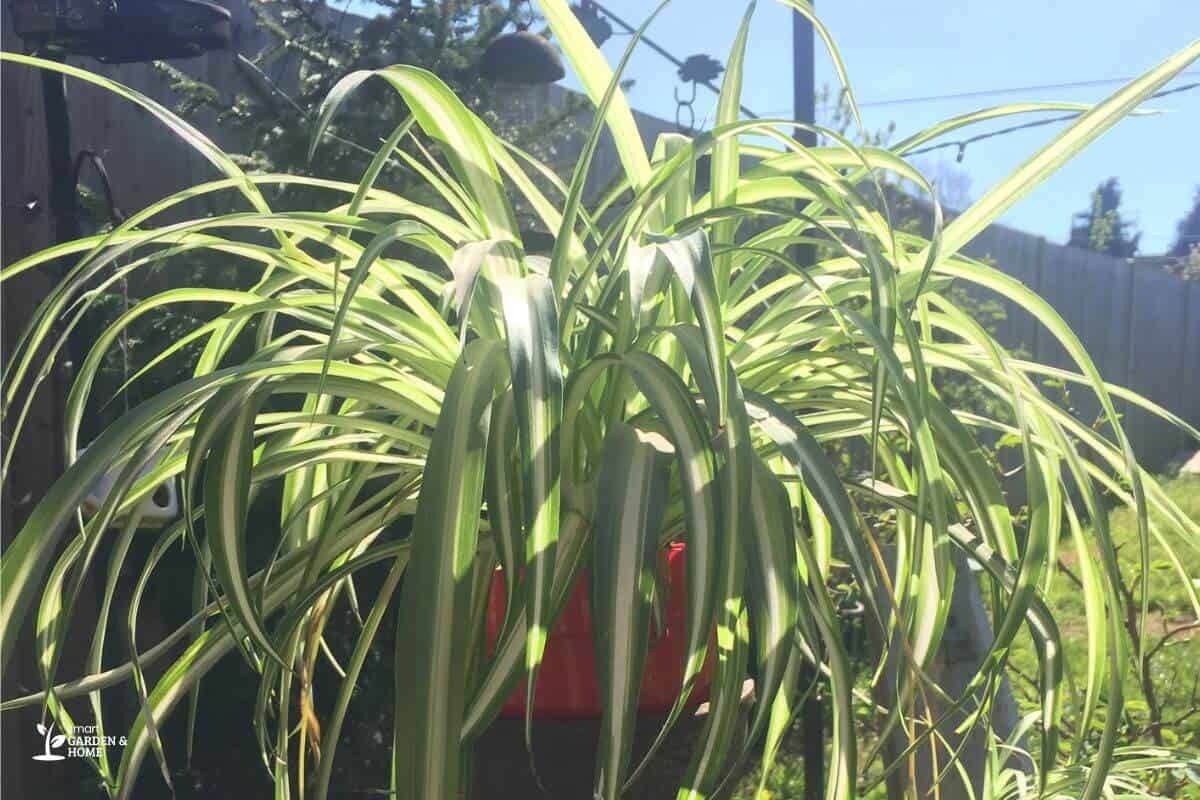
Spider plants aren’t made to live in the sun. Direct sunlight exposure and excessive heat during the hottest hours of the day will result in curling leaves.
Another sign your spider plant is getting too much light is when dry brownish-red spots start appearing on the leaves.
To prevent this problem, place your plant in a location with bright indirect sunlight. Keep in mind that if your plant doesn’t get enough light it will also suffer.
Check its position throughout the year, as one location might be perfect during a certain season and become too bright or not bright enough as the sun shifts position in the sky.
If some leaves are already heavily scorched, the best solution is to remove them by cutting them off with sharp sterilized scissors.
4. Fertilizer: Feed Your Spider Plant Regularly
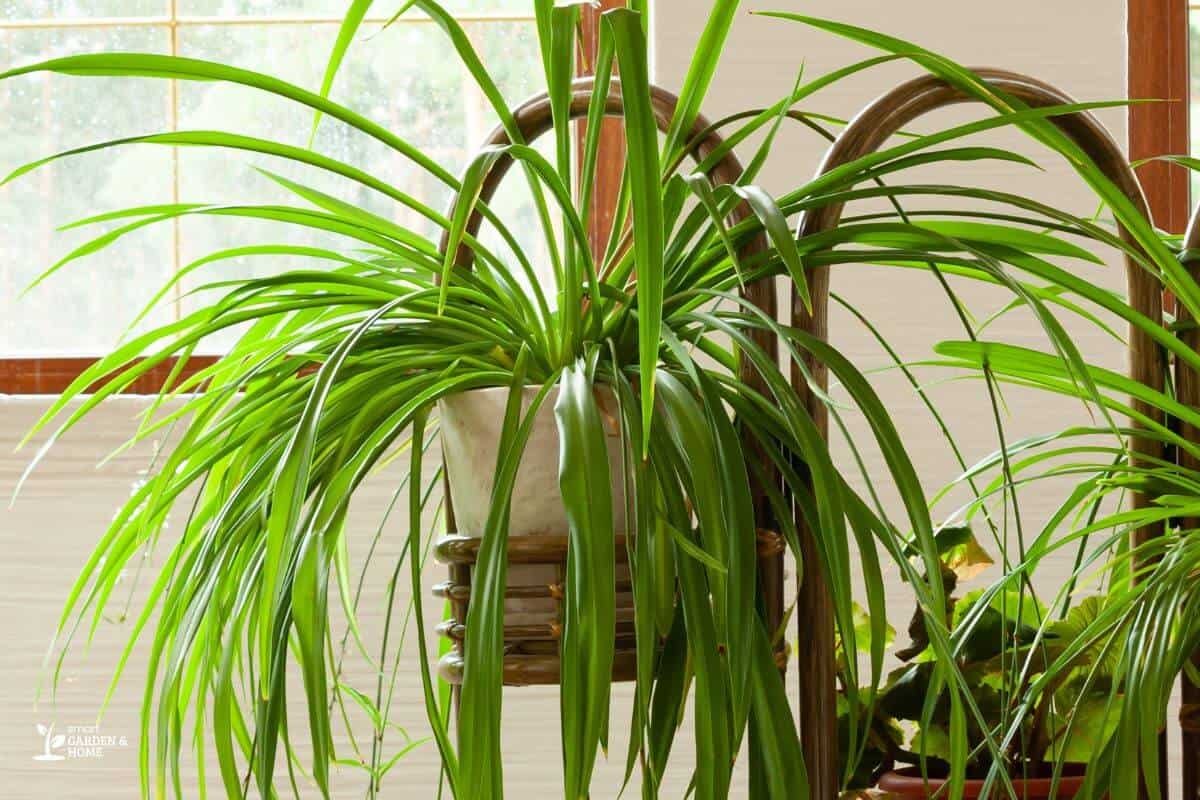
Spider plants are very low-maintenance plants that don’t need much fertilizer.
That doesn’t mean that they shouldn’t be fertilized at all, as this can result in a lack of nutrients that will prevent the plant from producing new leaves. The remaining ones will also suffer and will often bend.
The obvious solution is to fertilize your plant regularly, without exceeding its needs. Avoid feeding your plant during the cold season, as these plants go dormant and won’t need nutrients during this time.
Spider plants love nitrogen-rich fertilizers. Make sure to always follow the directions on the label.
Also, avoid using tap water to hydrate your plants as this might lead to chemical or salt buildup. If you suspect fertilizer or salt buildup on your plants, you can flush it out with rainwater or distilled water to dissolve it.
5. Pests: Rinse With Water and Apply Neem Oil

There are several pests that can attack household plants. Spider mites, thrips, mealybugs, and aphids are most likely to infect spider plants.
All of these insects feed by sucking the juice of plants, which will cause the leaves of your spider plant to bend.
You can tell if this is the cause of the problem by observing your plant closely.
A cottony substance, a sticky residue, or tiny red or brown spots are sure signs of a pest infestation. Look on the underside of the leaves as well as many pests thrive there.
To solve this pest problem, you can try blasting the plants with a jet of water. Most times, washing the insects away will be enough to stop the infestation. For more important ones, it can be necessary to use insecticidal soap on the entire plant.
Finally, a good way to treat an attack and prevent future ones is to apply neem oil. The treatment will need to be repeated a few times to be sure the insects won’t come back.
6. Pot-Bound
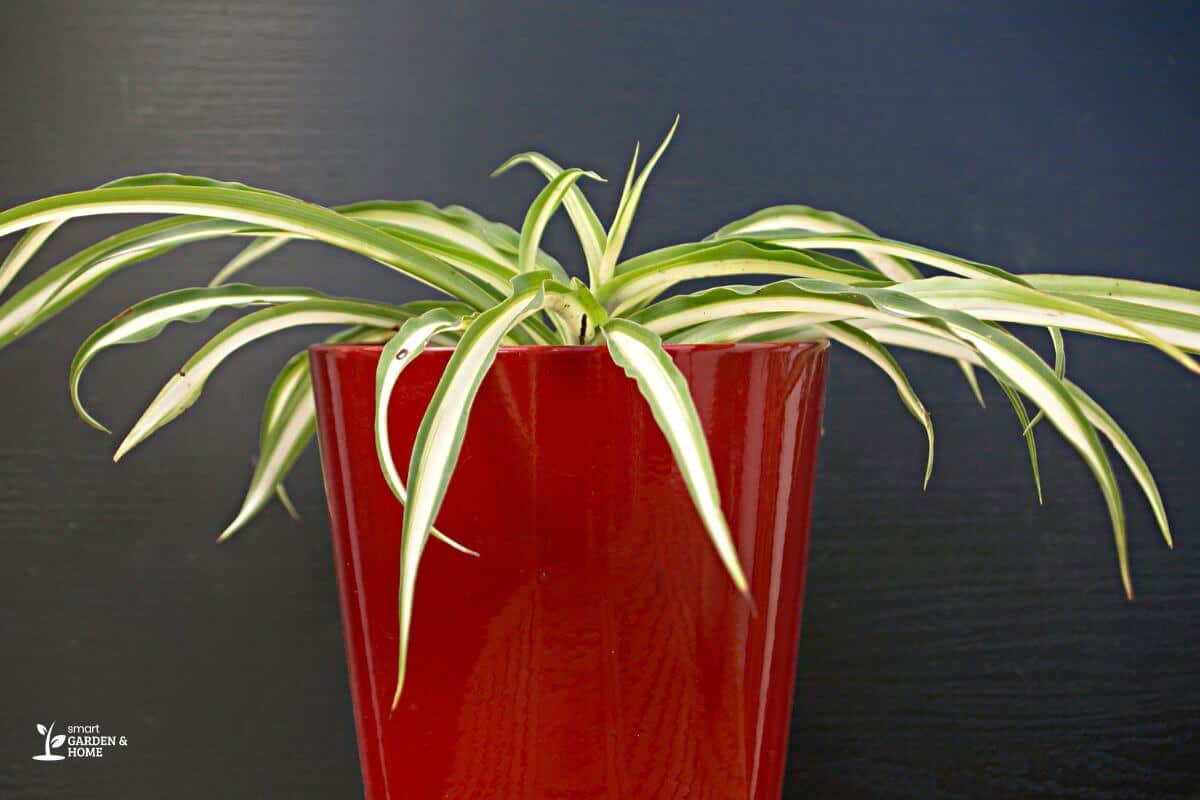
If the size of the container is too small, bent leaves could be a symptom of a lack of nutrients and water. As the roots grow, they risk taking up too much space in the pot compared to the available soil.
You can tell your plant is root-bound if the roots start growing out of the drainage holes or emerging from the top of the soil. At this point, your spider plant will certainly benefit from repotting with fresh, fast-draining soil.
You can prevent your plant from becoming pot-bound by repotting it every year when young and every other year when matured in a slightly larger pot.
Be sure to repot your plant to a larger size pot that is about an inch bigger than the previous one. That should solve your problem of spider plant leaves curling.
Final Thoughts on Bending Spider Plant Leaves
If you ever see your spider plant leaves curling, don’t fret and take a deep breath as that problem is very common but it can easily be fixed.
To address this concern, monitor the amount of water and bright light your spider plant gets, provide regular fertilizer, and rinse with water to get rid of pests.
You may also repot your spider plant into a slightly larger pot when necessary. This will ensure a happy and healthy plant.
Hooked on learning more about spider plant leaves? Well, we got you. Check out our other amazing articles below:
- Spider Plant Brown Tips
- Can You Trim Spider Plant Roots
- Spider Plant Keeps Falling Over
- Spider Plant Leaves Are Turning Yellow
- Root Rot in Spider Plant
Sources:

